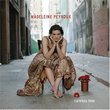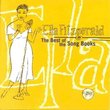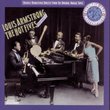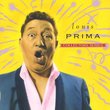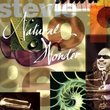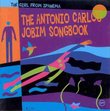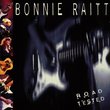| All Artists: Thelonious Monk Title: Ken Burns JAZZ Collection: Thelonious Monk Members Wishing: 0 Total Copies: 0 Label: Sony Original Release Date: 11/7/2000 Release Date: 11/7/2000 Genres: Jazz, Pop Styles: Modern Postbebop, Bebop Number of Discs: 1 SwapaCD Credits: 1 UPCs: 074646144923, 5099750103920 |
Search - Thelonious Monk :: Ken Burns JAZZ Collection: Thelonious Monk
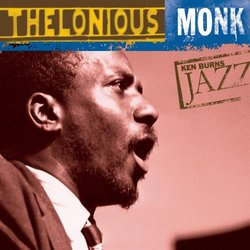 | Thelonious Monk Ken Burns JAZZ Collection: Thelonious Monk Genres: Jazz, Pop
Functioning as part of the musical component to Ken Burns's television documentary Jazz, this compilation is a 14-track introduction to Thelonious Monk's music. As with the other 21 single-CD compilations, the music here i... more » |
Larger Image |
CD DetailsSynopsis
Amazon.com Functioning as part of the musical component to Ken Burns's television documentary Jazz, this compilation is a 14-track introduction to Thelonious Monk's music. As with the other 21 single-CD compilations, the music here is, as the packaging says, definitive. Important tracks from Monk's work on Blue Note, Prestige, Riverside, Columbia, and even Black Lion are collected onto this nicely packaged, reasonably priced, remastered album. Here, newcomers and experts can dig into the work of this great American composer through such important jazz classics as "'Round Midnight" (which gets a solo reading here), "Straight, No Chaser," "Brilliant Corners," and "Ruby, My Dear." Of course, along with his being a prodigious composer, Monk's singular playing style is arguably one of the most recognized in jazz, regardless of instruments, and this disc showcases Monk's angular phrasing and ability to smudge his patented between-the-key notes. This seemingly awkward style may seem odd at first, but one stroll through this album is enough to prove the genius of Monk, who is one of jazz's greatest. --Tad Hendrickson Similarly Requested CDs
|
CD ReviewsA great place to start... vincericci | New York, NY United States | 01/10/2001 (5 out of 5 stars) "This exceptional collection is a must have for anyone who listems to music, period. I would say this is especially true for those under forty. Not to be age-ist, but I feel that Monk is perhaps more relevant as an American composer than Ellington for the younger set. As the key composer of the Bop era, he changed the nature of everything we hear, from Broadway show tunes to rock and roll, and of course, jazz. For alternative takes on these standards, I recommend the Kronos Quartet Plays Monk, with Ron Carter. This recording was actually my first introduction to a number of these melodies, and it is pretty wild to hear them played by a string quartet, backed up by seminal Be-Bop and Post-Bop bassist Carter. I have yet to see the footage used in the Burns series, but for visual effect, I would suggest checking out the excellent Monk documentary 'Straight, No Chaser' which was made by da'mayor, Clint 'Make My Day' Eastwood (much better than his 'Bird,' in my opinion, which focussed too much on Charlie Parker the junkie and didn't give enough credit to his profound intelligence).Bottom line: start here if you are new to Monk. Then keep going...all the way to the Complete Riverside Recordings, if you get hooked. Be sure to check out 'Carmen McRae Sings Monk' along the way. It helps to hear these melodies sung. Better get it in your soul, as Mingus used to say..." Undeniable Proof of Monk's Greatness Ren | Knoxville, TN United States | 07/20/2002 (5 out of 5 stars) "This Ken Burns compilation of Thelonious Monk songs proves why Thelonious Monk is one of the most influencial, most gifted, and most unique jazz artists in the history of jazz. It contains songs that cover Monk's whole career.The first important piece of Monk's career is the Blue Note recordings where he was the session leader. These are all pretty famous Monk tunes, such as "Well You Needn't", "Epistrophy", and "Straight, No Chaser". These recordings are comparatively short because at the time these were made, songs couldn't be longer than 3 or 4 minutes, so solos had to be cut considerably. However, I think the importance of these tracks is just as valid. Monk was once called the greatest jazz composer since Duke Ellington, and I think those tunes can show that, especially "Epistrophy". Songs from the rest of his career give that description more credibility. "Blue Monk" is sort of the oddball on this anthology, taken from The Thelonious Monk Trio. It's a 7+ minute recording of "Blue Monk", which is one of my favorite Monk tunes, featuring impressive solos from Monk, bassist Percy Heath, and legendary drummer Art Blakey. This is not the best performance of this song; I personally think the performance from the 1963 Newport Jazz Festival is the best, but that doesn't have so much importance in the catelog of Monk tunes, so I can understand why they placed this performance here; it's sort of an introduction to the longer Monk performances. The next is one of the weirdest Monk tunes I have ever heard: "Brilliant Corners", taken by the album of the same name. The power of this song and the odd-sounding harmonies really make this a standout on the CD.The next important segment of Monk's career is the career-changing gig at New York's Five Spot Cafe in 1957, where for five months Monk's quartet featured the relatively unknown John Coltrane. This was not only important in Monk's career, but also in Coltrane's, where Coltrane began experimenting with "sheets of sound". This anthology features Monk and Coltrane doing takes of two tunes: the gorgeous "Ruby My Dear" and the catchy "Trinkle Tinkle". "Off Minor" is also here, taken from the Thelonious Monk Orchestra at Town Hall, showing once again how catchy and different Monk's music is. The next three songs feature tenor saxophone player Charlie Rouse, who was with Monk throughout his Columbia career; in fact, all three tunes are taken from his Columbia career ("Rhythm-a-Ning", "Criss Cross" (a favorite of mine), and "Green Chimneys"). They demonstrate Monk's freshness, even after 15 years of recording since "Well You Needn't" in 1947.The final two tracks are solo Monk, which is really something to write home about. The first is his most famous song and a classic jazz standard, "Round Midnight". This is my favorite Monk performance of this song (and I've heard a lot, trust me). Miles would do the best performance of this song in 1955 on his "Round Bout Midnight" CD. The final track is a Gershwin standard, "Nice Work If You Can Get It", where Monk shows he can adapt other people's standards to his own unique style.Monk's style is the most unique in jazz. You will notice his soloing is quite different from most bebop jazz pianists. Silence, instead of speed, has always been Monk's trademark. His solos sometimes consist of him reharmonizing the melody or hitting odd-sounding notes in a way that you think he sounds clumsy. He was so ahead of his time that when he first came about, people didn't like him because they thought he just couldn't play. Monk is unpredictable in his soloing, and his style is easily identifiable. His songs are pretty much all catchy and gorgeous, and his influence on not only jazz piano players, but jazz musicians and composers is profound.I recommend this album for all jazz fans and people who want to check out what Monk is all about." WARNING! jerry grigsby | Cincinnati Ohio | 03/14/2002 (5 out of 5 stars) "This may be the most expensive CD that you ever buy! The reason of course, is that if you love it as much as I do, you'll end up going out and buying all of the CDs that these cuts come from.I bought this CD on a whim; I had always heard how great Monk was and wanted to see what all the fuss was about. By the second cut on this CD I was addicted for life. These songs are so good, and the muscians on this CD are a who's who of jazz elite. I can't recommend this CD enough. Buy it, and then go buy everything else you can get your hands on of Monks."
|

 Track Listings (14) - Disc #1
Track Listings (14) - Disc #1